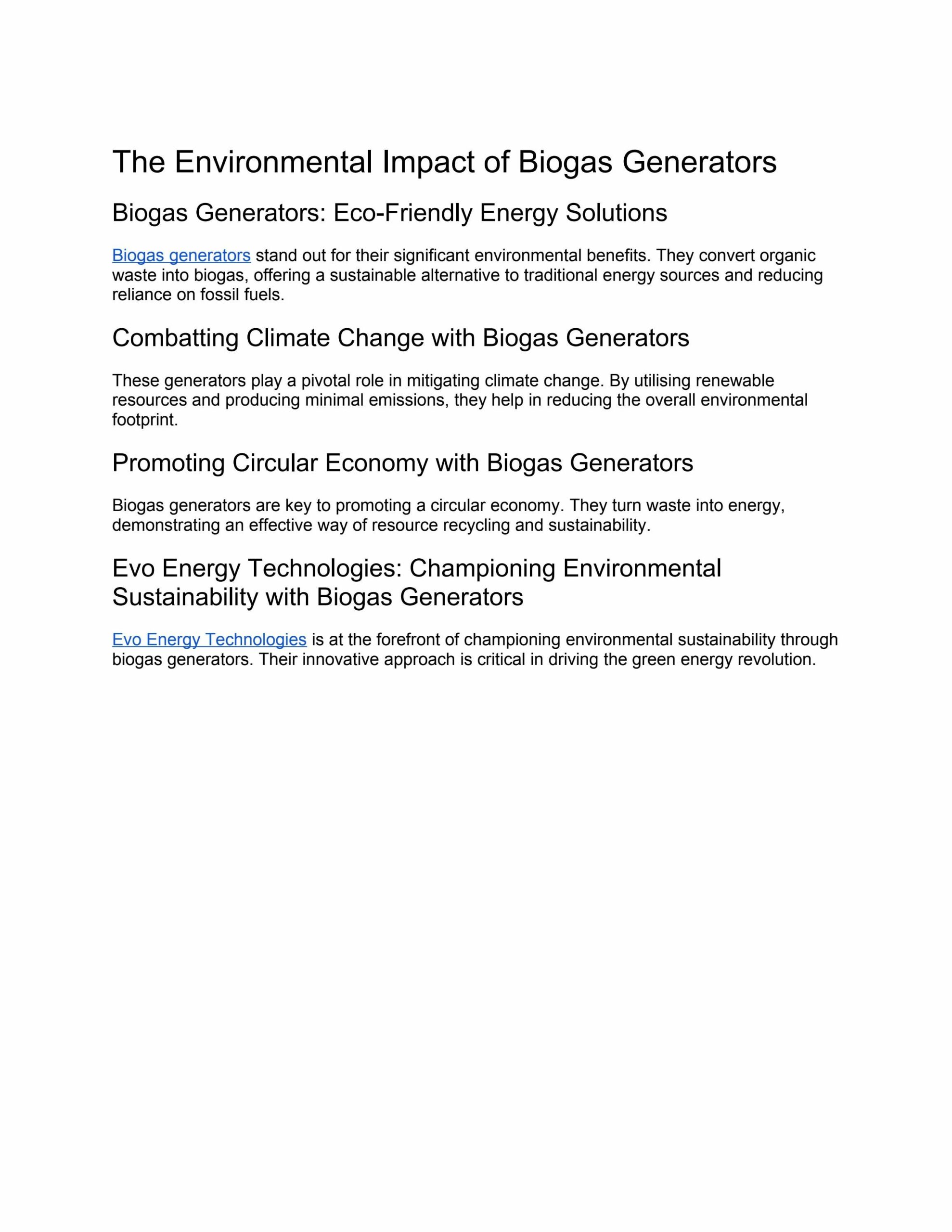Biogas, a renewable energy source derived from organic materials through anaerobic digestion, captivates the imagination of environmental scientists and sustainability advocates alike. It’s more than just a pragmatic solution to waste management; biogas embodies a multifaceted response to many pressing environmental challenges. To fully appreciate the intricacies of biogas’s environmental impact, it is imperative to scrutinize its production, application, and the consequent ecological ramifications.
1. Understanding Biogas Production
Biogas primarily consists of methane (CH4) and carbon dioxide (CO2), produced by microorganisms that degrade organic matter devoid of oxygen. The feedstock for biogas includes agricultural residues, food waste, sewage, and other biodegradable materials. This process, often termed anaerobic digestion, provides a closed-loop system wherein organic materials that would otherwise contribute to environmental degradation are repurposed into a valuable energy source.
During biogas production, the digestible organic matter undergoes a series of metabolic processes facilitated by anaerobic bacteria. These microorganisms break down complex organic compounds into simpler biomolecules, ultimately resulting in biogas. While methane is the primary component of biogas, the process also produces digestate, a nutrient-rich byproduct that can be utilized as a natural fertilizer. This transformation from waste to energy not only contributes to energy generation but also minimizes the volume of materials destined for landfills.
2. Mitigating Greenhouse Gas Emissions
One of the most pertinent environmental impacts of biogas is its potential to mitigate greenhouse gas (GHG) emissions. Traditional methods of waste disposal, such as landfilling or incineration, generate significant amounts of GHGs, particularly methane, which is over 25 times more potent than carbon dioxide in terms of its global warming potential over a 100-year period. When organic matter decomposes anaerobically in landfills, methane is released into the atmosphere, exacerbating climate change.
Conversely, biogas systems capture this methane and utilize it for energy production, thus preventing its release into the atmosphere. By converting waste into energy, biogas systems can significantly reduce net GHG emissions. Studies have indicated that implementing biogas systems can decrease methane emissions from municipal solid waste by approximately 60-90%, representing a substantial advancement in combating climate change.
3. Enhancing Energy Security and Diversification
The utilization of biogas contributes to energy security by diversifying the energy mix and reducing dependency on fossil fuels. This not only stabilizes energy prices but also diminishes the geopolitical risks associated with oil and gas supply chains. Biogas can be converted into electricity or processed into biomethane, which can be injected into natural gas grids or used as a vehicle fuel. This versatility makes biogas an attractive alternative source of energy in both urban and rural settings.
Moreover, biogas systems can be locally integrated, enabling rural communities to harness their waste and produce energy close to home. This localized energy production promotes resilience and autonomy, encouraging sustainable development in regions that are often underserved by traditional energy infrastructure.
4. Nutrient Recycling and Soil Health Improvement
An often-overlooked aspect of biogas production is the impact of its digestate on soil health. The digestate, when properly processed, serves as a high-quality organic fertilizer that enhances soil structure, aeration, and moisture retention. By returning nutrients back to the soil, biogas systems support sustainable agriculture practices. This nutrient recycling is particularly vital in regions experiencing soil degradation due to intensive farming.
Furthermore, the application of nutrient-rich digestate reduces the reliance on synthetic fertilizers, which can leach into waterways and cause eutrophication, a serious environmental concern. By fostering a more circular economic model, biogas systems not only minimize waste but also promote agricultural sustainability and productivity.
5. Reducing Water Pollution
The environmental benefits of biogas extend to water resource management. Conventional livestock farming and agricultural practices often result in nutrient runoff, leading to water pollution. The anaerobic digestion of livestock manure is a favorable method to manage such wastes, converting them into usable energy while substantially reducing the risk of nutrient leaching into waterways.
Through proper management, biogas solutions can help prevent contamination of local water supplies and mitigate the adverse effects that excess nutrients have on aquatic ecosystems. This is critical in conserving biodiversity and maintaining the health of freshwater systems, which are increasingly under threat from human activities.
6. Challenges and Considerations
Conclusion
In summary, biogas emerges as a promising solution for many of the environmental challenges facing our world today. From reducing greenhouse gas emissions and enhancing energy security to improving soil health and water quality, its multifaceted benefits illustrate the potential of sustainable innovations in transforming waste management into ecological and economic opportunities.
As technology advances and societal awareness grows, the role of biogas in reshaping our environmental landscape is likely to expand further, heralding a more sustainable future for generations to come.










